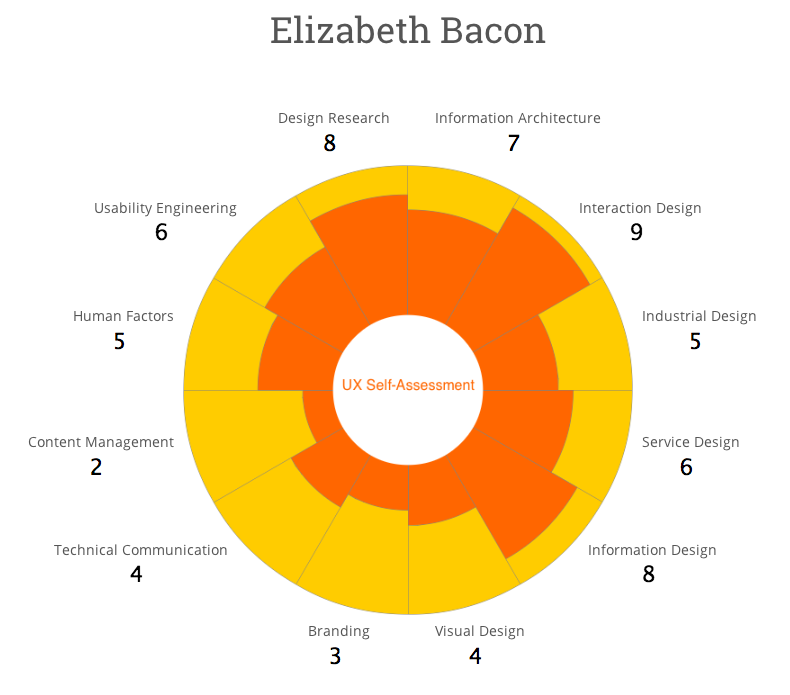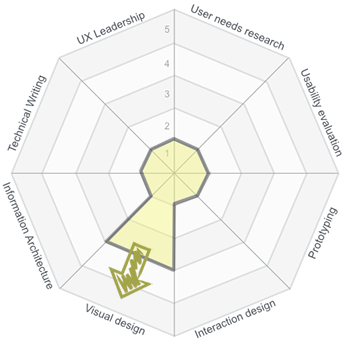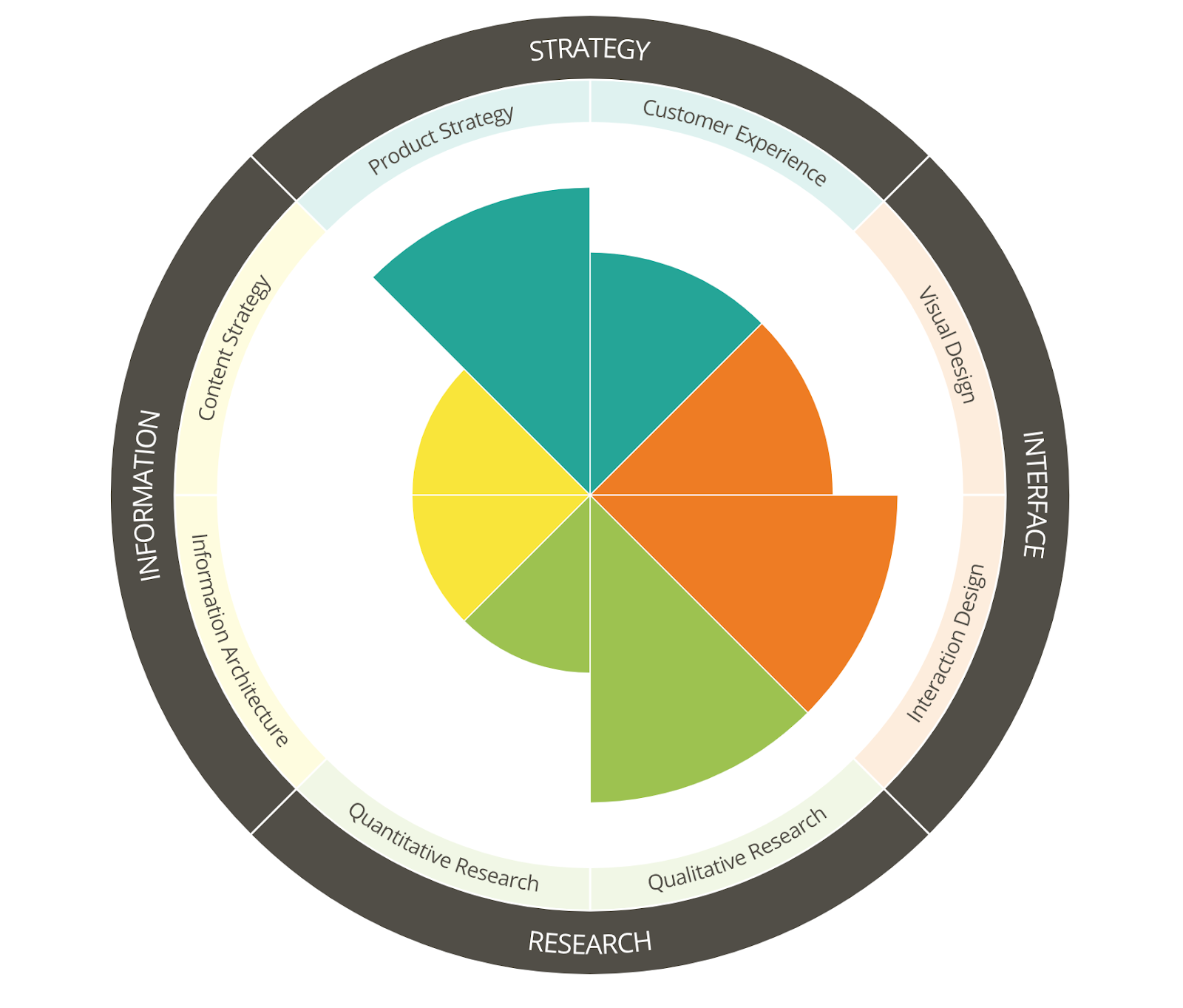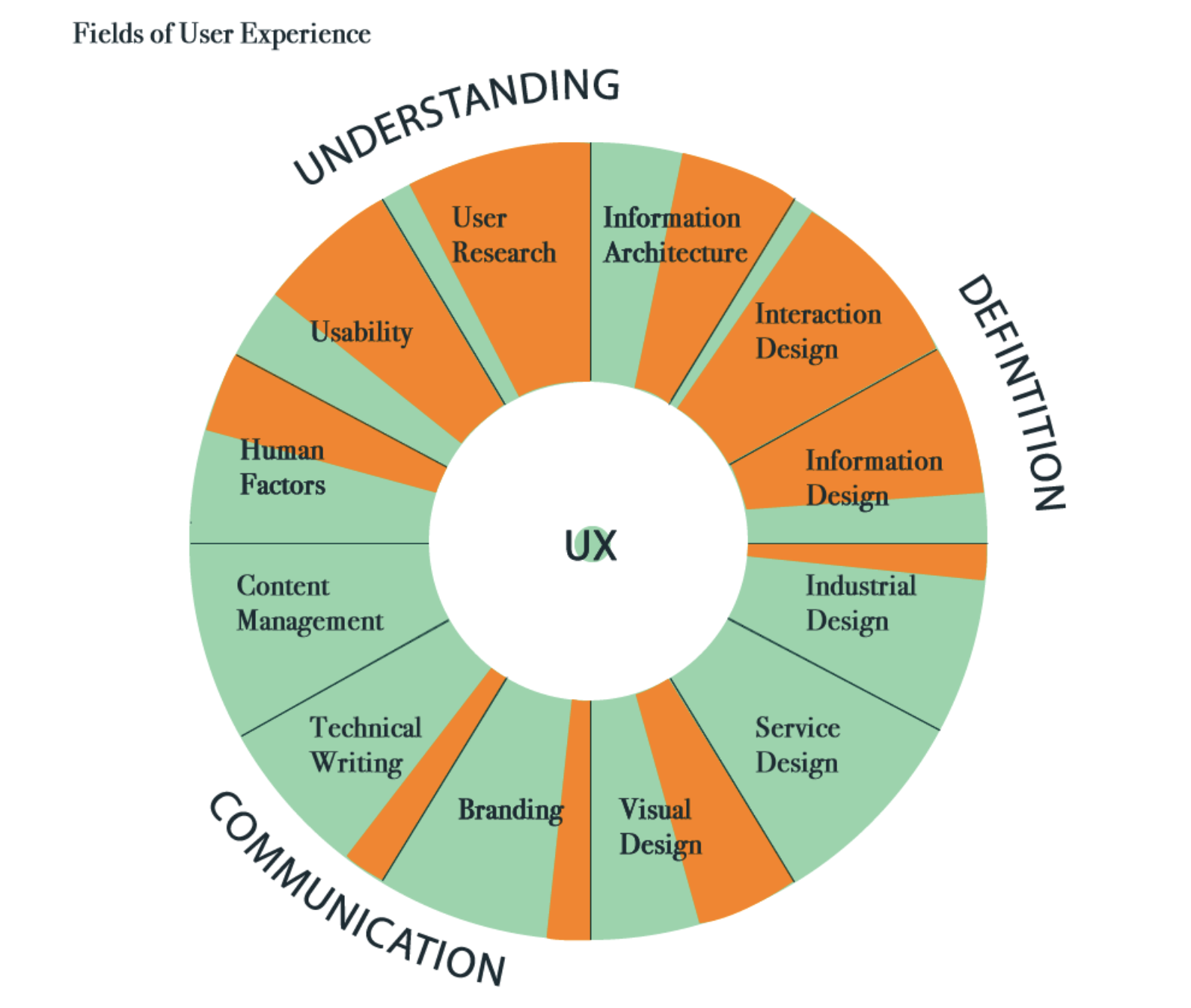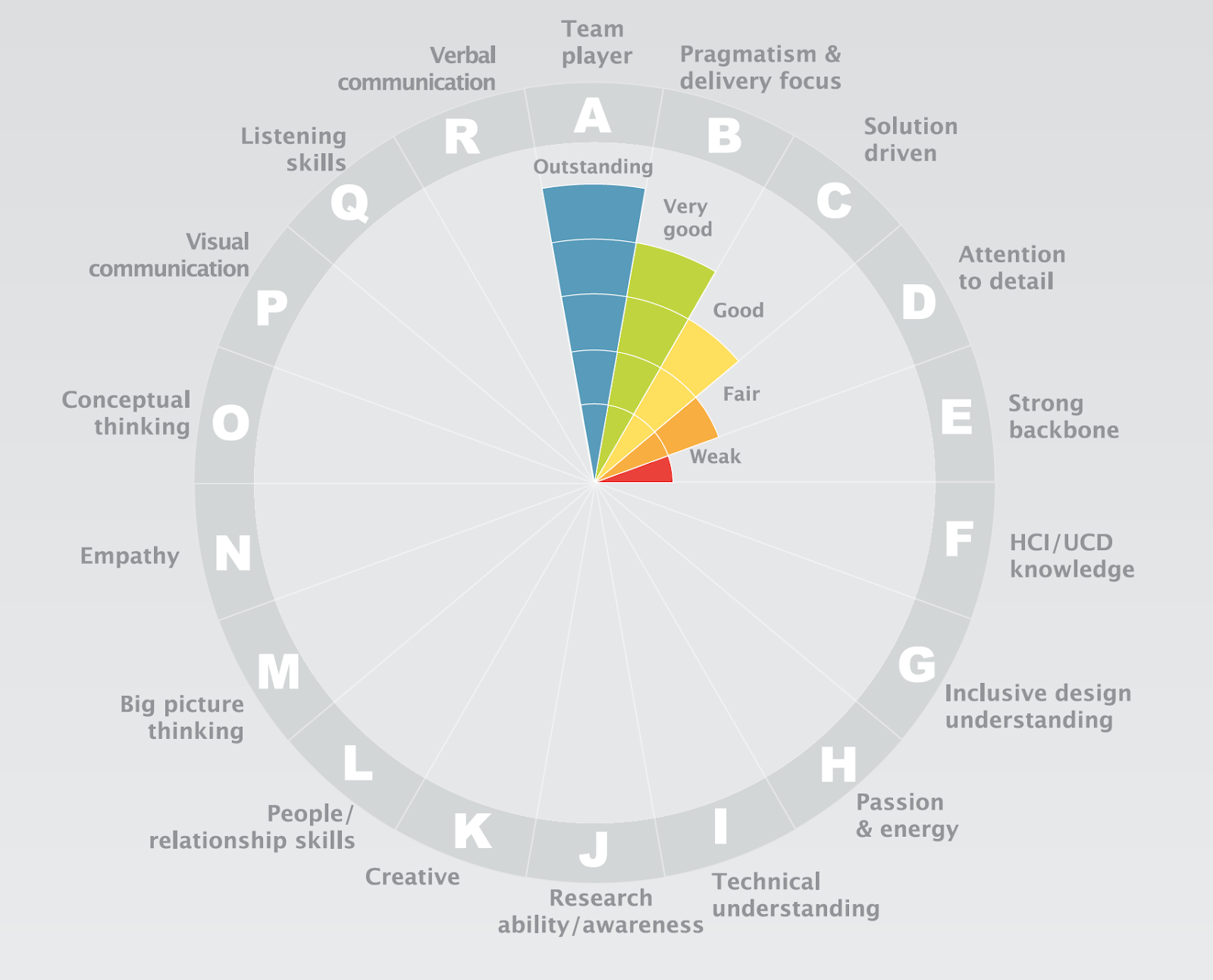The UX spectrum: mindsets, not skill sets
Updated UX Spectrum from 2019
About a year ago [this was written in 2019], I created a UX Spectrum diagram (below). The purpose was to illustrate the different skill sets in UX as simply as possible. For years, I’d used the question ‘Where do you sit on the UX’ spectrum in interviews. It was something I most, surprisingly, understood. So I turned it into a PowerPoint slide. I posted to LinkedIn, and now it turns up everywhere.
Original UX spectrum 2018
So now it’s getting an update (see top image). Why? Well, I think I got something wrong. The diagram wasn’t really about skillsets. I was sent other diagrams that do a much better job (see ‘Going Beyond one Axis’ below), and I realised that’s not what I was trying to do. Instead, I realised it should be more about mindsets.
I discovered that skills are temporary and shift with time. Mindsets are more consistent and part of a person. For example, I almost employed a very talented product designer. They had never designed a website or a mobile app, yet their process and approach produced excellent outcomes. I know that they could create great solutions for any problem thrown at them. There was a robust user-focused approach from shop design to electronic instrument design. It was their mindset, independent of job titles or skill set, that I was looking to get on the team.
So being a good manager, having excellent typography skills, or even being able to facilitate user testing is external to the Spectrum. Instead, you'll gravitate to things UI if you have a ‘UI’ mindset. You’ll be more at home with typography, motion design, grid layouts etc. Skills give a clue where someone fits. But the mindset, in my view, sets which skills someone is likely to have and will readily embrace.
Where do you sit?
Anyone who has been doing UX for a while will naturally gravitate towards certain parts of the spectrum, regardless of job titles (see later for other names for UX). As our role changes, we may shift around, but, if we consider ourselves part of UX, we tend to have a centre of gravity somewhere along this line.
Team size will affect how broad you are expected to be. Small teams require ‘unicorns’, or team members who can cover research and design. Large squads allow for specialism and to focus on one area.
As our team or company grows, we naturally specialise and spend more time doing no UX company-related tasks, like wrangling budgets and employing people. But that’s something different.
Here is a rough guide to how I label each of the three points on the spectrum.
Research
Research is about the need to understand. It is about being an ethnographer. It’s about the love of exploration and ensuring an understanding of the users and customers. It is about driving the outcome through knowledge and wanting to be evidence-based. So if you get a kick out of those ‘aha’ moments when you uncover previously unknown user behaviour, you may have a researcher Mindset. Research is about understanding.
UX
User Experience is about the need to make an order from chaos. It is about being an architect. It can often be about tackling a project's ‘messy middle’. It is architecting for the design world, where a spreadsheet is equally valid as a prototyping tool. It’s about being a hub for ideas and synthesising those into journeys, flows, structures and blueprints for something great. User Experience is about shaping concepts.
UI
UI is about the craft of creating the interface. It is about graphic and interaction design. It is about the form, the nuance, the animation and the small details. It is about balancing personal taste and the needs of the users/stakeholders. If you are compelled to pick up a notebook and start to sketch the interface, then you have a UI mindset. UI is about presenting and delivering.
UX as part of UX.
Please stick with me here, but the UX mindset is a central part of UX. In my previous diagram, I called this Core UX. There is no argument that UI and research are not integral to UX (as are other skill sets). But the central UX mindset is both discrete and overlapping with its two siblings. It’s hard to teach, but you can be part of UX without having that core UX mindset.
What about (insert job title here)
Last time I posted the diagram (the version with different skills marked out), there was some debate about where other things lived. For example, Interaction Design was suggested to be somewhere in the middle, so is interchangeable with the concept of core UX. For older UXers, interaction design is equatable to UI, so I’ve removed the titles for argument. The same is true for UX Strategists, Content Strategists, Service Designers, Product Designers and other titles in the UX world. Often what we do is the same; it’s just different titles can be helpful in various organisations.
Going beyond one axis
The last diagram produced some excellent feedback. Some saw it as not detailed enough, although that was intentional. Jason Mesut on Linkedin pointed me to his work and has gone on to do his version of the UX spectrum.
So, for balance, here are a few examples of alternatives people have used chronologically. There may be others, and I welcome feedback. You can see there is a need to try to represent people’s skill sets fully. I find these diagrams tend to result in a shape that is hard to read quickly yet can be useful for seeing gaps inabilities. The multiple versions of these radial diagrams also show the different views of what constitutes UX. I think UX shifts with time, so these segments are far from fixed.
UX Sundial: Elizabeth Bacon
http://elizabethbacon.com/the-ux-sundial-model-iterated-now-including-a-0/
UX Sundial: UX Mastery
https://uxmastery.com/ux-skills-stack/
User Focus: The 8 Competencies of User Experience
https://www.userfocus.co.uk/articles/8-competencies-of-user-experience.html
The shape of UX Designer: Jason Mesut
https://medium.com/amplify-design/shapes-of-ux-designer-ad047bddac7f
The UX Spectrum: Jason Mesut
Jason Mesut worked with Vitimum T on a parallel UX spectrum and may have predated my use of the term UX spectrum.
https://medium.com/shapingdesign/the-ux-spectrum-cb29f048faf9
In Summary
Skills are essential but shift and are temporary. Mindsets are more deep-rooted and give a person an aptitude for particular skills. A mindset can be carried across careers, skills less so. I’ve provided the most straightforward view I can of the areas of UX so people can communicate better about the breadth of UX. Did I get it right?


